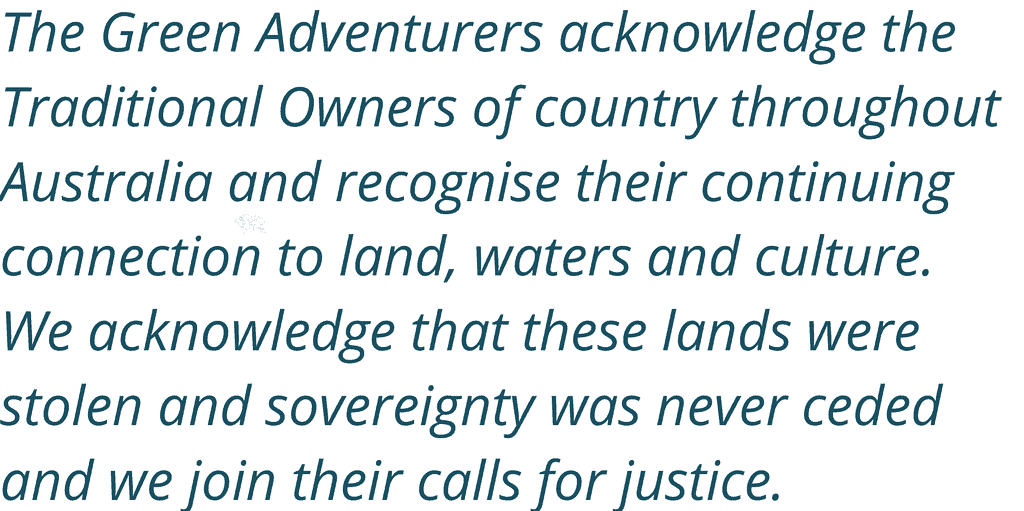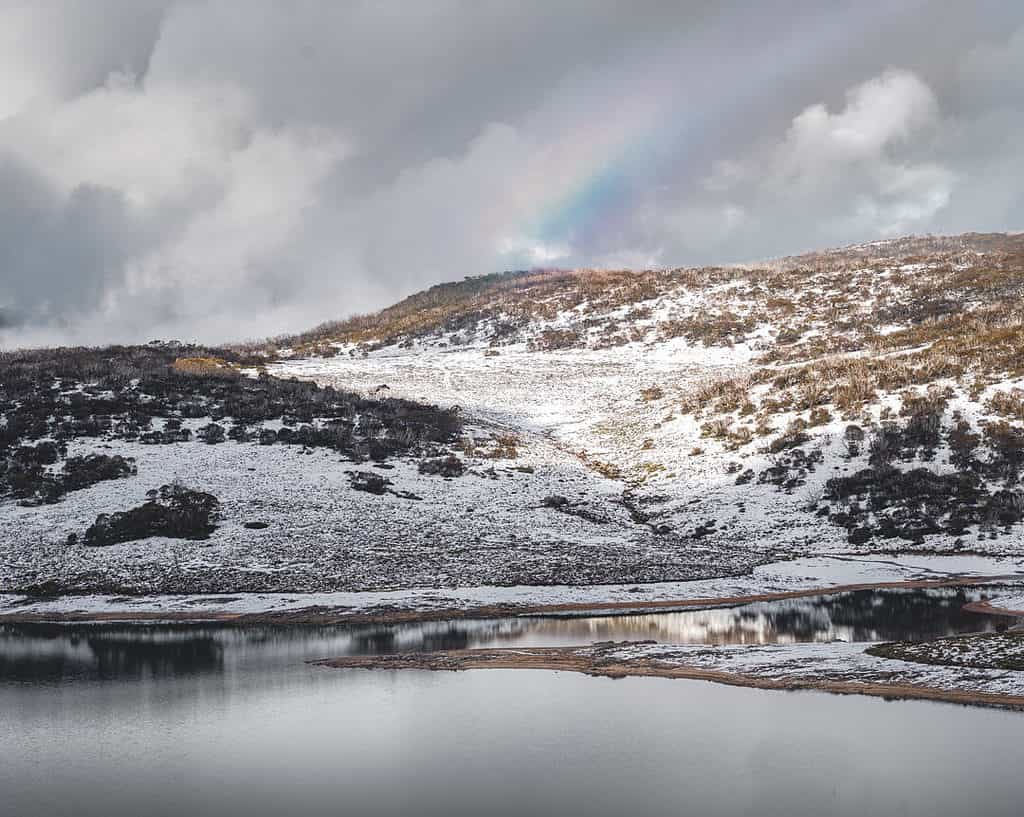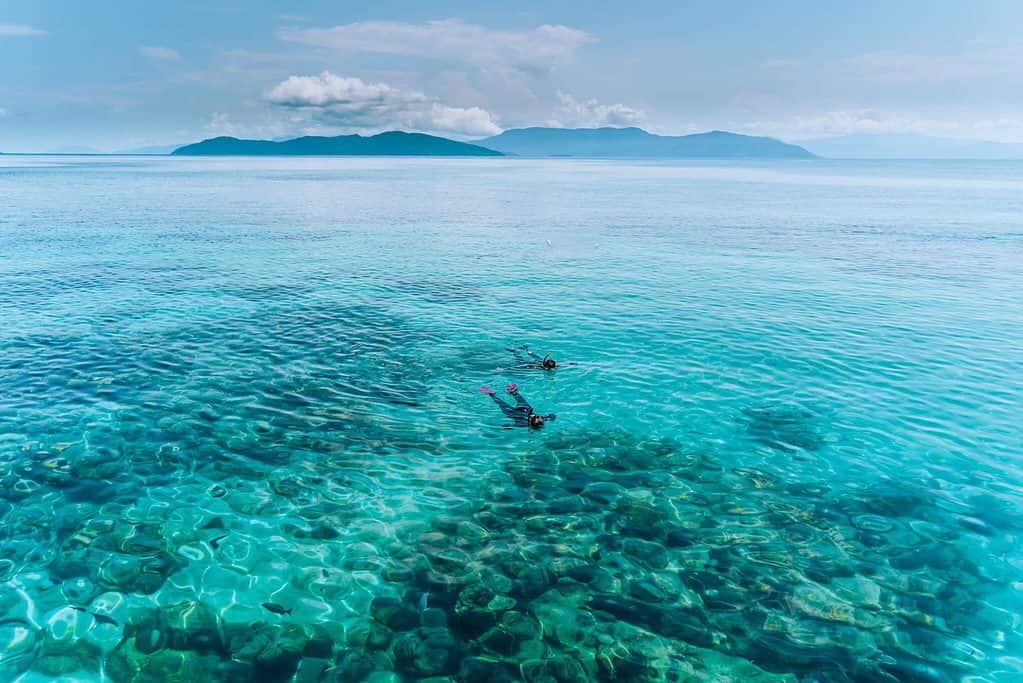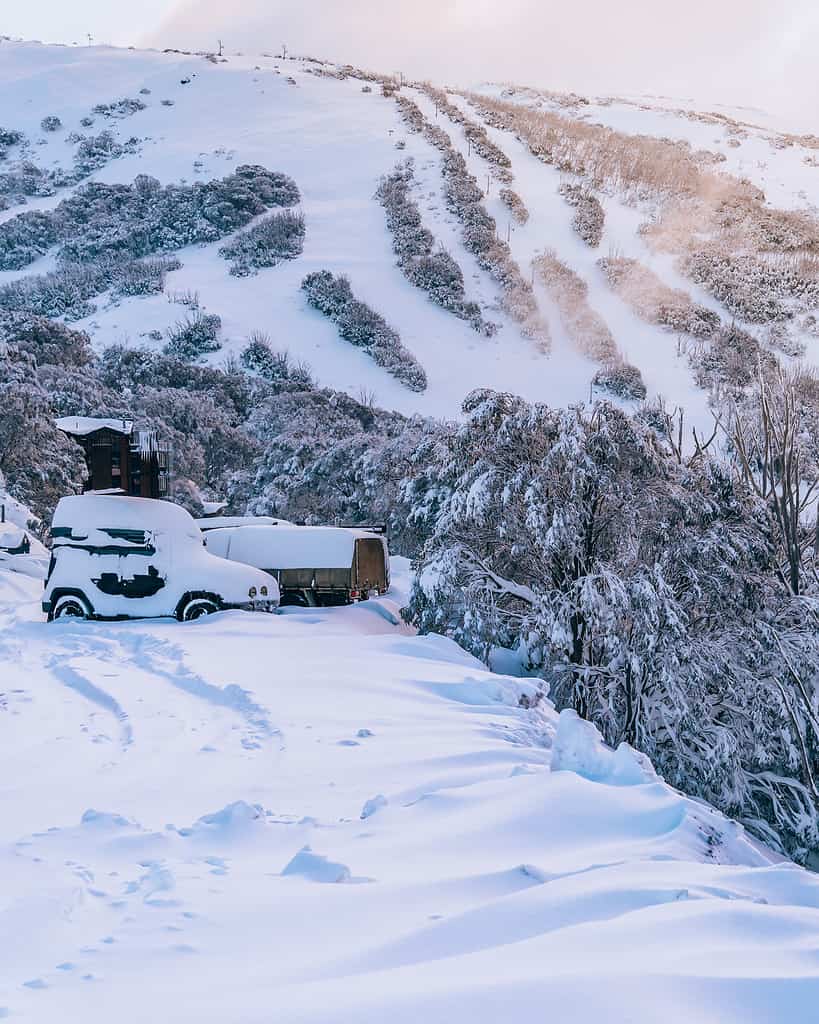When is Winter in Australia?



Your ultimate guide to understanding and enjoying Australia’s winter season
As the summer heat begins to fade in the Northern Hemisphere, the Southern Hemisphere gears up for its own version of the cooler months. While many people associate Australia with its sunny beaches and scorching temperatures, there is a whole different side to the Land Down Under during the winter season. So, when is winter in Australia exactly?
In this article, we will explore everything you need to know about the Southern Hemisphere’s cooler months. From the dates and duration of winter in different parts of the country to the unique experiences and activities available during this time, we’ll uncover the secrets of Australia’s winter wonderland. So grab your coat, pack your bags, and get ready to embrace the chill as we take you on a journey through the captivating winter season in Australia.

When Is Winter In Australia?
Winter in Australia officially spans from the start of June through to the end of August. Unlike the frequently depicted sunny, warm beaches, Australia during these cooler months presents a captivating contrast, offering a distinctive experience for those who venture there during this time.
The winter experience in Australia differs significantly across the country due to its vast size and geographic diversity. In northern regions like Queensland and the Northern Territory, winter months are milder, while the southern parts experience a more traditional winter climate with colder temperatures and even snowfall in some areas.
Understanding the seasons in the Southern Hemisphere
Australia, being in the Southern Hemisphere, experiences the opposite seasons compared to countries in the Northern Hemisphere. While winter in the Northern Hemisphere starts around December to February, winter in Australia begins around June and ends in August. This means that while the rest of the world is enjoying the summer sun, Australians are bundling up and embracing the cooler temperatures. Australia is a vast country, and the weather can vary significantly from one region to another during the winter months.
Australia’s diverse climate means that different parts of the country experience winter in different ways. The northern parts of Australia, such as Queensland and the Northern Territory, have a tropical climate that remains relatively warm even during the winter months. In contrast, the southern regions, such as Victoria, New South Wales, and Tasmania, have a more temperate climate where winters can be chilly and even snowy in some areas. Understanding the regional differences in weather patterns is key to planning your winter trip to Australia.
What To Expect During Winter In Australia
Planning a trip to Australia in the winter months? It’s important to know what’s in store. Winter in Australia comes with a diverse range of weather conditions and activities, specific to the region you decide to explore. Let’s delve into the unique and varied experiences you can expect during Australia’s winter season.

How Cold Does It Get In Australia?
During winter, temperatures in Australia can vary significantly depending on the region. In the southern states, including Victoria, Tasmania, and the southern parts of Western Australia and South Australia, temperatures can drop to near freezing and sometimes below, especially overnight. The ski fields in the Australian Alps in New South Wales and Victoria regularly experience temperatures well below zero. On the other hand, in the northern regions, winter temperatures are milder and can range from 15 to 30 degrees Celsius.
What’s the warmest place in Australia in winter?
If you’re seeking warmth during the Australian winter, the northern parts of the country are your best bet. Areas in Northern Territory, Western Australia, and Queensland are known for their warm winter temperatures. In particular, the city of Darwin in the Northern Territory, known for its tropical climate, often boasts winter temperatures above 30 degrees Celsius. In Queensland, towns like Cairns and Port Douglas also offer warm winter temperatures, perfect for beach-going and exploring the Great Barrier Reef.
Rainfall During Winter in Australia
Rainfall patterns during winter also depend on the region. The northern part of Australia, which experiences its ‘dry season’ during winter, generally sees less rainfall. Conversely, the southern parts of Australia, particularly the southwest of Western Australia and most of Victoria, tend to receive more rainfall during winter months. Tasmania, being the most southern state, often receives the most rainfall during winter, contributing to its lush, green landscapes. It’s always a good idea to check the specific weather forecast for your destination in Australia during the winter months.
Weather patterns during winter in different regions of Australia
As the winter season graces Australia, it ushers in an array of weather patterns across its diverse regions. Here’s a look at what you might encounter:
Queensland: Queensland’s winter is generally mild and dry. High temperatures average between 20 to 22 degrees Celsius (68 to 72 degrees Fahrenheit), while lows can drop to around 10 degrees Celsius (50 degrees Fahrenheit). It’s the perfect time for outdoor exploration and visiting landmarks like the Great Barrier Reef.

New South Wales: Winters in New South Wales, and its capital Sydney, are cooler. Highs generally range between 16 to 18 degrees Celsius (61 to 64 degrees Fahrenheit), with lows around 8 to 9 degrees Celsius (46 to 48 degrees Fahrenheit). City exploration and coastal walks are enjoyable during this season.
Victoria: Winter is colder in Victoria, with high temperatures averaging around 14 degrees Celsius (57 degrees Fahrenheit) and lows around 6 to 7 degrees Celsius (43 to 45 degrees Fahrenheit). Snowfall is common in the mountain ranges, providing opportunities for winter sports.
Tasmania: Winter in Tasmania is the coldest in Australia, with high temperatures averaging around 11 to 12 degrees Celsius (52 to 54 degrees Fahrenheit) and lows near 2 to 3 degrees Celsius (36 to 37 degrees Fahrenheit). The highlands often see snowfall, adding to Tasmania’s winter allure.
South Australia: Winters in South Australia are cool, with average highs around 15 to 16 degrees Celsius (59 to 61 degrees Fahrenheit) and lows of about 7 to 8 degrees Celsius (45 to 46 degrees Fahrenheit). Both indoor and outdoor attractions are readily available for visitors.
Western Australia: Winter in Western Australia, particularly in Perth, is mild but wet. Temperatures average around 19 degrees Celsius (66 degrees Fahrenheit) for highs, and lows of about 8 to 9 degrees Celsius (46 to 48 degrees Fahrenheit), with frequent rainfall, especially in June and July.
Northern Territory: The Northern Territory has a tropical climate, and winter corresponds to the dry season. Average highs stay warm at around 30 degrees Celsius (86 degrees Fahrenheit), with lows of about 15 degrees Celsius (59 degrees Fahrenheit), providing excellent conditions for exploring natural attractions like Kakadu National Park or the iconic Uluru.
Best things about winter in Australia
The Scenery: During winter, Australia transforms into a winter wonderland, particularly in the alpine regions. The snow-capped mountains in places like the Snowy Mountains in New South Wales and the highlands of Tasmania offer stunning, picturesque views.
Skiing and Snowboarding: Winter sports enthusiasts will love Australia’s snowfields. Top skiing destinations include Thredbo and Perisher in New South Wales, and Mount Hotham and Falls Creek in Victoria.

Mild Winters in the North: In northern Australia, winters are quite mild, making it the perfect time to explore the tropical rainforests or visit iconic sites like the Great Barrier Reef without the oppressive heat of the summer months.
Whale Watching: Winter is the best time to go whale watching in Australia as thousands of whales migrate along the coastline. Places like Hervey Bay in Queensland offer excellent whale watching opportunities.
Festivals: Australia hosts various cultural festivals during the winter. Sydney’s Vivid Festival lights up the city with stunning light installations, while the Dark Mofo Festival in Tasmania embraces the winter darkness with music, food, and art installations.
Wildlife: Winter is a great time to spot Australia’s unique wildlife. Kangaroos, wombats, and echidnas are more active during the cooler parts of the day in winter.
Less Crowded Tourist Spots: Winter is considered off-peak tourist season in many parts of Australia, which means fewer crowds at popular attractions and potentially lower prices for accommodations and flights.
Cozy Experiences: There’s something incredibly cozy about warming up in front of a roaring fire after a day exploring Australia’s winter landscapes. Many lodges and hotels in cooler regions offer this quintessential winter experience.
The worst things about winter in Australia
Cold Temperatures: Particularly in the southern states of Australia like Tasmania and Victoria, winter can be quite chilly with temperatures dropping to freezing levels in some places. This can be tough for those not used to colder weather.
Limited Daylight: With shorter days and longer nights, you might find that you have less time for outdoor activities during the day.
Rain and Wind: In certain parts of Australia, winter can bring significant rain and wind, particularly in coastal areas, which might impact outdoor plans.
Winter Swimming: Unless you’re quite brave, swimming in the ocean can be too cold for comfort during winter, especially in the southern parts of the country.
Dangerous Road Conditions: In areas where it snows, roads can become slippery and dangerous, especially for those unfamiliar with driving in these conditions.
Wildlife: Some of Australia’s wildlife goes into a state of torpor (a kind of hibernation) during the winter, which means sightings of certain species may be less frequent.
Flu Season: Like many countries, winter in Australia is traditionally flu season, so there’s a higher chance of getting sick during this time.
However, with the right preparation and mindset, even these downsides can be managed. Staying aware of the weather, taking necessary precautions, and being flexible with your plans can help ensure that you have an amazing time exploring Australia in winter.

Winter Activities and Attractions in Australia
Australia may not typically be the first country that springs to mind when considering winter holidays, but the cooler months in this southern hemisphere gem present a wide range of unique experiences. Whether it’s the thrill of adventure or the lure of relaxation that you’re after, there’s something for everyone here.
Adventure seekers will find their winter haven in the Snowy Mountains of New South Wales and the Australian Alps in Victoria. These areas, replete with world-class ski resorts, open up a world of winter sports activities. From downhill skiing and snowboarding to snowshoeing and snowmobiling, the thrill of winter sports is well within reach. Don’t miss our detailed guide to Falls Creek, one of Australia’s most popular ski resorts, for more on what to expect.
For those leaning more towards a relaxed and sun-drenched winter escape, the coastal areas of Queensland and Western Australia are perfect, maintaining relatively warm and sunny conditions even during winter. Walk along pristine beaches, enjoy a seaside picnic, or try fishing at some of the best spots in the country. Don’t forget to check out Green Island, a beautiful coral cay located in Queensland, for an unforgettable tropical winter experience.
Winter Festivals and Events in Australia
Winter in Australia is not just about enjoying the great outdoors; it’s also a time for festivals and events that celebrate the unique culture and traditions of the country. From food and wine festivals to music and arts events, there’s something for everyone to enjoy during the cooler months.
Vivid Sydney: An annual festival usually held from late May to mid-June, Vivid Sydney is a spectacular celebration of light, music, and ideas. The city of Sydney transforms into a vibrant canvas of massive light installations and projections, bringing together art enthusiasts, tech innovators, and curious spectators. Performances by local and international musicians and thought-provoking industry forums complement the stunning visual displays.
Winter Festival Sydney: Usually held in June or July, this annual festival brings a touch of winter magic to Sydney. Enjoy ice skating, snow slides, and delicious winter-themed food and drinks amidst the city’s iconic landmarks.
Dark Mofo, Tasmania: Hosted by the Museum of Old and New Art (MONA), this midwinter festival typically takes place in June. Dark Mofo is renowned for its avant-garde and sometimes controversial art installations, winter feasts, and musical performances.
Illuminate Adelaide: This festival of light, art, and music usually lights up the city of Adelaide for two weeks in July. Experience a spectacular display of light installations, immersive technological experiences, music performances, and thought-provoking workshops and talks.
WinterWild, Apollo Bay: A captivating arts festival held across two winter weekends in August in Victoria. WinterWild transforms Apollo Bay with atmospheric bonfires, enthralling artistic performances, vibrant music, and cinema, creating a truly unforgettable celebration of the winter season.
Exploring the unique wildlife and landscapes during winter
Winter in Australia offers a unique opportunity to explore the country’s diverse wildlife and landscapes in a different light. Many wildlife encounters are best experienced during the cooler months, as animals are more active and visible.
One of the most iconic winter wildlife experiences in Australia is whale watching. The southern regions, such as Victoria and South Australia, offer excellent opportunities to witness the annual migration of humpback and southern right whales. From June to August, these majestic creatures make their way along the coast, providing a breathtaking spectacle for nature enthusiasts.
Winter is also a great time to explore Australia’s national parks and nature reserves. The cooler temperatures make hiking and bushwalking more enjoyable, and the landscapes come alive with vibrant colours. From the red rock formations of Uluru in the Northern Territory to the lush rainforests of the Daintree in Queensland, there’s no shortage of natural wonders to discover during the winter season.

Almond Blossoms
Almond blossoms in Australia offer a stunning display, draping the landscapes in a sea of delicate pink and white hues. This beautiful spectacle generally takes place from late July to mid-August, providing a wonderful preview to the spring season.
The Riverland region in South Australia, known as Australia’s largest almond growing region, is one of the prime locations to witness this captivating sight. During the almond blossom season, the region’s orchards are adorned with clusters of these beautiful blossoms, creating an enchanting, picturesque landscape.
Another prime location in South Australia is Willunga on the Fleurieu Peninsula, home to the annual Willunga Almond Blossom Festival. Held every year since 1969, usually at the end of July, this festival celebrates the arrival of almond blossoms with a myriad of activities such as farmer’s markets, fairground rides, and fireworks.
While Riverland and Willunga are known hotspots, almond trees are grown in various other parts of Australia too, including other areas in South Australia, Victoria, and New South Wales. Local tourism boards often provide information on the best viewing spots and times.
Remember, the sight of almond blossoms is fleeting, with the blooms lasting only a few weeks. If you plan to witness this ephemeral beauty, be sure to align your travel dates with the blossom season.

Tips for travelling to Australia during winter
Travelling to Australia during winter requires some preparation to ensure you have a comfortable and enjoyable trip. Here are a few tips to keep in mind:
Plan your itinerary accordingly: Take into consideration the regional weather patterns and plan your activities and attractions accordingly. If you’re visiting the southern regions, make sure to include winter sports activities and cozy indoor experiences in your itinerary.
Check road conditions: If you’re planning to drive during your trip, be aware of any road closures or hazardous conditions, especially in mountainous areas where snowfall can occur.
Pack appropriate clothing: Pack layers and bring warm clothing for the cooler regions, and lighter clothing for the northern parts of Australia. Don’t forget to pack sunscreen and sun protection, regardless of the region you visit.
Book accommodation in advance: Popular winter destinations, such as ski resorts, can get booked up quickly during the winter season. Be sure to book your accommodation in advance to secure your preferred dates and avoid disappointment.
Stay hydrated: Despite the cooler temperatures, it’s still important to stay hydrated, especially if you’re engaging in outdoor activities. Pack a water bottle and remember to drink plenty of fluids throughout the day
Stay safe in the outdoors: Weather conditions can change quickly so be prepared for spending time in a harsh environment.
What to pack for a winter trip to Australia
Packing for a winter trip to Australia requires careful consideration of the weather conditions and activities you plan to engage in. Regardless of the region you visit, it’s always a good idea to pack layers to accommodate the changing temperatures throughout the day.
For the cooler regions of Victoria and Tasmania, be sure to pack warm clothing such as sweaters, jackets, scarves, and gloves. Don’t forget to bring a good pair of waterproof boots if you plan to explore snowy areas. In the northern parts of Australia, where the temperatures are milder, you can pack lighter clothing such as long-sleeved shirts, light jackets, and jeans.


Protecting your skin from the winter sun
Sun protection is still important during winter in Australia, especially in the northern regions. Be sure to pack sunscreen, sunglasses, and a hat to protect yourself from the sun’s rays. Additionally, don’t forget to pack any specific gear or equipment you may need for winter sports activities, such as skiing or snowboarding.
Australia’s Seasons
Australia is a continent of weather extremes and varied climates due to its vast size and geographical diversity. Its climate can be broadly classified into two – the tropical climate in the northern part and the temperate climate in the southern part.
Tropical Climate in the North
In the northern parts of Australia, which include places like Queensland, the Northern Territory, and the northern part of Western Australia, the climate is tropical. This means there are typically two main seasons: the ‘Wet’ season and the ‘Dry’ season.
The Wet Season (November to April) is characterized by high humidity, monsoonal rains, and thunderstorms. Although this leads to lush green landscapes and cascading waterfalls, it can sometimes cause flooding.
The Dry Season (May to October) is marked by lower humidity, very little rainfall, and cooler temperatures, making it the ideal time to explore these regions.

Four Seasons in the South
In contrast, the southern parts of Australia, including cities like Sydney, Melbourne, Adelaide, and Hobart, typically experience all four seasons in a year: Summer, Autumn, Winter, and Spring.
Summer: December – February Summers in southern Australia are known for their warm to hot temperatures. It’s the perfect time for beach outings and water-based activities like surfing, swimming, and fishing. However, this period can also be prone to extreme heatwaves and bushfires. Some southern regions, particularly South Australia and Victoria, can see temperatures rise above 40 degrees Celsius.
Autumn: March – May Autumn brings a cool change after the hot summer, with temperatures that are comfortably warm during the day and cooler at night. The landscape transforms into hues of gold, red, and brown, especially noticeable in regions with deciduous trees like the Adelaide Hills and the Dandenong Ranges near Melbourne. This is an excellent time for visiting wineries, exploring national parks, or taking scenic drives.
Winter: June – August Winter in southern Australia is usually quite chilly, with temperatures often dropping to single digits, especially in the early morning and at night. Snow is common in the highlands and mountain ranges of Victoria, New South Wales, and Tasmania, offering opportunities for winter sports like skiing and snowboarding. Coastal regions, though cooler and often windy, provide crisp and clear days perfect for coastal walks.
Spring: September – November Spring is a beautiful season in southern Australia. Temperatures begin to rise, and there’s an abundance of blooming wildflowers, especially in Western Australia, which boasts the largest collection of wildflowers on the planet. It’s a great time for outdoor activities, from hiking to picnics in the park, as well as for attending various spring festivals. This season also marks the start of the whale-watching season along the southern and eastern coastlines.
What Effect Is Climate Change Having In Australia?
Climate change is having significant and wide-ranging effects on Australia. Some of the key impacts include:
Increased Heatwaves: One of the most immediate and noticeable effects of climate change in Australia is the increase in the frequency and intensity of heatwaves. These extreme heat events can have severe consequences for human health, lead to an increase in energy consumption due to air conditioning, and exacerbate drought conditions.
More Intense Bushfires: The risk and intensity of bushfires are growing due to hotter and drier conditions. The 2019-2020 Australian bushfire season, also known as Black Summer, was one of the most severe in Australia’s history and is a stark example of this impact.
Sea-level Rise: Rising sea levels due to melting polar ice can lead to the inundation of low-lying coastal areas, increased coastal erosion, and more frequent and severe coastal flooding. This is particularly concerning for Australia, which has a high proportion of the population living in coastal regions.
Devastating Floods: Australia is experiencing increasingly severe flooding. A warming atmosphere, which holds more moisture, leads to heavier rainfall and more frequent flooding events. These floods can cause substantial damage, displacing communities, damaging infrastructure, and taking lives. They also disrupt ecosystems, causing long-term harm to local flora and fauna. The financial toll of recovery is enormous, stressing the economy of affected regions.
Changing Rainfall Patterns: Climate change is leading to shifts in rainfall patterns across Australia. Generally, it’s expected that northern Australia may experience increased rainfall while southern Australia, especially the southwest and southeast, may become drier. This can affect water availability and agricultural productivity.
Impacts on Biodiversity: Australia’s unique ecosystems and wildlife are also at risk. Changes in temperature and rainfall patterns, combined with increased frequency of extreme weather events, can disrupt the habitats and behaviours of Australia’s wildlife. The Great Barrier Reef, home to a rich variety of marine life, has already suffered mass coral bleaching events due to rising sea temperatures.
Impacts on Agriculture: Changes in climate can have significant effects on agriculture, affecting crop yields, livestock health, and the cost of production. Regions that are becoming hotter and drier may face challenges in maintaining their traditional farming practices.

Winter In Australia FAQ
Winter in Australia officially begins in June and ends in August.
The winter weather in Australia can vary significantly by region. In northern areas like Queensland and the Northern Territory, winters are mild, while southern regions like Victoria and Tasmania experience colder temperatures and even snowfall.
Yes, it does snow in certain parts of Australia during winter, particularly in the highlands of Tasmania, Victoria, and New South Wales. For more info see this post – Does It Snow In Australia?
Pack according to the region you’re visiting. For the colder southern regions, warm clothing, jackets, scarves, gloves, and sturdy shoes are essential. If you’re visiting northern regions, lighter clothing for the day and some warmer pieces for cooler nights are recommended.
Australia offers a host of activities during winter. These range from skiing and snowboarding in snowy regions to hiking, wildlife watching, and beach visits in milder areas. Cultural festivals and winter events also take place during this season.
Winter is one of the best times to visit the Great Barrier Reef as the weather is mild, the waters are clear, and the site is less crowded.
Swimming during winter is possible, especially in the northern parts of Australia where the temperatures are milder. Some brave souls might also enjoy a refreshing dip in the southern beaches, but the water can be quite chilly.
The winter months in Australia are June, July, and August.
July is usually the coldest month in Australia.
This can vary significantly by region. In southern areas like Tasmania and Victoria, the temperature can drop to near freezing. In contrast, northern regions like Queensland maintain mild winter temperatures around 20 degrees Celsius (68 degrees Fahrenheit).
Typically, Hobart in Tasmania is considered the coldest city in Australia.
January is typically the hottest month in Australia.
The three hottest months in Australia are typically December, January, and February.
This is subjective and can depend on personal preferences. Many consider Sydney, with its moderate climate and balance of warm summers and cool winters, to have the best weather.
Tasmania is considered the coldest state in Australia.
Liawenee in Tasmania is the coldest permanently-inhabited place in Australia.
Australia is a year-round destination, but September to November (spring) and March to May (autumn) are often considered the best times to visit because of mild weather.
Northern Australia, particularly the northern parts of Queensland and the Northern Territory, tends to be the warmest in winter.
According to the majority of scientific studies, average temperatures in Australia have been gradually increasing, which is consistent with global warming trends.
Winter in Australia typically spans 92 days, beginning on June 1 and ending on August 31.
Concluding: Winter In Australia
While Australia may be known for its sunny beaches and hot summers, the country’s winter season offers a whole new perspective and a range of unique experiences. From the snow-capped mountains of the southern regions to the vibrant festivals and wildlife encounters, winter in Australia has something for everyone to enjoy. So, embrace the chill, pack your bags, and embark on a journey to discover the captivating beauty of Australia’s winter wonderland.

